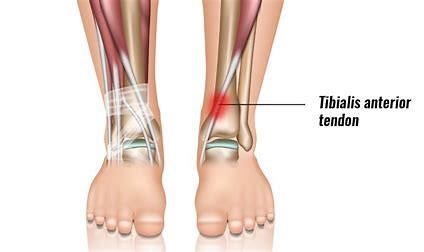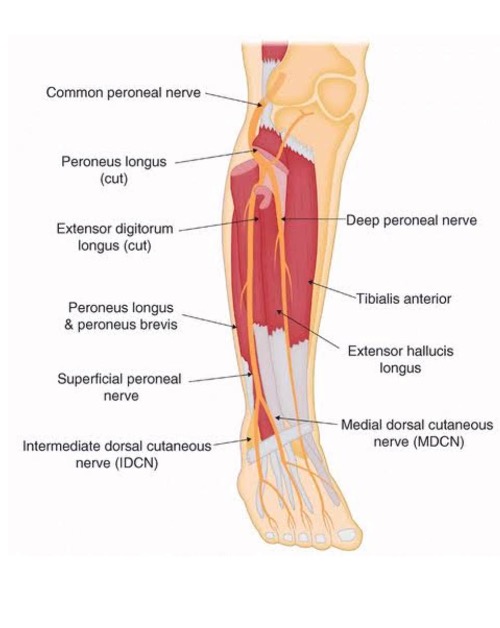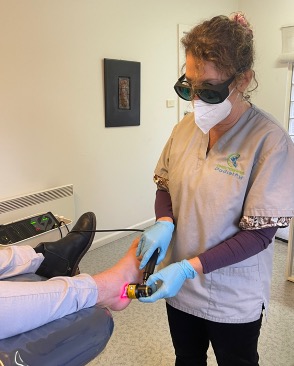Telehealth Now available
bulkbilled through medicare and DVA where applicable *
bulkbilled through medicare and DVA where applicable *
Causes of Anterior Ankle pain:
Anterior Ankle Impingement
Synovitis
Tibialis Anterior tendinopathy
Nerve entrapments
Anterior Ankle Impingement
A common source of chronic ankle pain among athletes is anterior ankle impingement. This condition, sometimes called “footballer’s ankle,” causes pain in the front of the ankle joint. It’s caused by build-up of scar tissue or bone spurs, usually in response to an acute injury or chronic stress on the ankle.
Symptoms:
Pain on the front and/or outside of the ankle joint.
A feeling of ankle instability.
Decreased ankle range of motion when stretching your toes up toward your shin.
This area is often tender, and occasionally the bone spur can be felt over the front of the ankle.
Treatment:
Initial anterior ankle impingement treatment should be non-operative.
Physical therapy to help improve the range of motion and break down scar tissue.
Activity can gradually start building up before returning to original levels.
Anti-inflammatory medication reduces pain and supports the healing process.
If the main cause of a patient’s symptoms is from impingement (rather than ankle arthritis) removing the prominent impinging bony spurs can relieve symptoms. Surgical treatment of ankle impingement involves removing the prominent bone spurs either by arthroscopic surgery or by opening up the ankle joint with an incision.
Synovitis

Ankle Synovitis is an injury to the synovial membrane in the ankle. It is an inflammation of the synovium that causes pain and swelling. This inflammation can result in excess fluid leaking into the joint, which can result in a blockage of nutrients to the surrounding surfaces, a degradation of the cartilage, and instability in the joint.
Symptoms
This condition may be accompanied by pain and heat in the ankle joint. The pain may range from mild aching to a sharp burning pain.
Swelling and inflammation deep in the ankle joint may also be associated with ankle synovitis. It may or may not be visible on the exterior of the joint.
A reduced range of motion and loss of function may occur, depending on the degree of pain and inflammation involved. When excess fluid is released into the joint, or severe swelling occurs within the synovium, a tightness may be felt in the joint itself, further reducing range of motion.
Treatment
Rest, ice and NSAIDs and or injection therapy will help reduce the inflammation and reduce stress on the synovial membrane
Heat may be used later to improve function and reduce stiffness within the joint but avoid using heat in the initial stages of treatment.
A correction of the condition that caused the inflammation will also be required to prevent it from occurring again. Orthotic devices may help correct imbalances and structural issues within the foot. This condition will usually respond within 3 to 6 weeks of treatment.
Preventing Ankle Synovitis
A proper warm up will help prepare the muscles and joints for any activity they might be called upon to complete. This helps reduce the effects of any existing muscle imbalances and prepares the muscles to support and protect the joints during the activity.
Avoid activities that cause pain. This should be a common-sense rule, but many athletes try to push through the pain hoping it will just go away. Pain is a signal from your body that something is not right, listen to it and avoid those activities until they are pain free.
Adequate rest between training sessions helps reduce chronic, or overuse injuries. Rest time is when the body repairs and rebuilds previous damage. Without rest time built into a program the muscles, tendons, and ligaments are not given an opportunity to heal.
Proper nutrition and hydration are also important because the nutrients needed to keep the muscles, bones, and joints healthy come from the foods taken in throughout the day. Water is needed to keep the many processes of metabolism going and to replenish moisture lost through perspiration, respiration, and urination.
Use of tape or other ankle strapping to protect the injury while playing on uneven surfaces, or during contact sports, may also protect the joint from injury.
Reversing any conditions that might cause injury to the synovium is also important for prevention. Correcting muscle imbalances and structural abnormalities will reduce the stress on the joint and synovial membrane, which will help reduce injuries.
Increasing overall strength helps provide a protective support system for the bones and joints, by strengthening the muscles and tendons.
Improving flexibility allows the joints to go through a larger range of motion without incurring injuries. It also improves the ability of the muscles to contract and protect in those extended ranges.
Tibialis Anterior Tendinopathy

Tibialis anterior tendinopathy is inflammation, or degeneration of the tendon, or tendon sheath, of the tibialis anterior muscle causing gradual onset pain and stiffness at the front of the ankle. Treatment involves reducing pain and inflammation, managing training loads and correcting any biomechanical problems of the foot.
Symptoms
Pain and stiffness at the front of the ankle, particularly when bending the foot and toes upwards.
There may also be swelling and redness over the front of the ankle, specifically along the path of the tendon.
Pain will get worse with increased activity, particularly running or walking up hills.
A creaking feeling (called crepitus) can be felt when pressing in on the tendon as the foot moves the foot up and down.
There may be weakness lifting the foot upwards which may result in a foot drop or slapping gait.
Treatment
Rest and apply the PRICE principles of protection, rest, ice, compression, and elevation, until there is no pain. Apply ice or cold therapy for the first two days. Cold can be applied for 15 minutes every couple of hours, reducing the frequency as pain allows.
After an initial, acute inflammation has settled down, applying heat and use a heat retainer type ankle support may be more beneficial. Put padding into the shoe if it is pressing on the tendon at the front of the ankle, aggravating the injury.
When pain allows exercises to stretch and strengthen the tibialis anterior muscle can begin, particularly resisted eccentric inversion. The aim is to gradually increase the load through the tendon so it can cope with normal training.
Biomechanical abnormalities – the main cause of Anterior TIbial Tendon pain is having an overly flat foot. This is because the position of the foot changes the demand from certain muscle groups. A podiatrist will be able to assess what orthoses are required to support a better foot posture.
Nerve Entrapments

The nerves at the front of the ankle are the branches of the Superficial and Deep Fibular (Peroneal) Nerves. Here the Superficial nerve lies below the skin but above the crural fascia layer and thus been so close to the skin layer is more easily injured. It’s a common spot that can get easily irritated by tight footwear, ankle sprains, trauma, and ankle surgery.
Symptoms
Symptoms of nerve pain and entrapment is very specific and include burning, sharp extreme pain, and electric shock type shooting pains, often referring down the nerve branch into the foot or back up the leg.
Diagnosis
Diagnoses is confirmed by clinical presentation, specific nerve clinical testing as – slump test, tinels sign and compression. This can be further confirmed by an experienced clinician with high end ultrasound to check for nerve enlargement and inflammation the small internal fascicles of the nerve
Treatment

Our Head podiatrist has trained overseas in these techniques, and is an experts in treating these conditions. Treatment includes removing aggravating factors as tight shoes, and introducing nerve glide and stretching techniques, often combined with either laser, and either nerve hydro dissection or lyftogts perineural injection therapy. The injection techniques release the nerve from its entrapment from the surrounding tissues, allowing it to glide between the tissue planes.
Cheltenham Podiatry foot doctors are experts in ankle injuries both acute and chronic. If you or a friend has an ankle concern, please do not hesitate to make an important. Many conditions are quicker to resolve the earlier they are attended to.

Talar Fractures at ankle Classification system The talus is a bone[…]